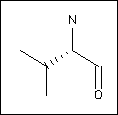

For an updated version of these pages, click here


Substitution preferences:
All protein types:
| Favoured | Ile ( 3) | Met ( 1) | Leu ( 1) | |||||
| Neutral | Ala ( 0) | Thr ( 0) | ||||||
| Disfavoured | Phe (-1) | Cys (-1) | Tyr (-1) | Ser (-2) | Pro (-2) | Lys (-2) | Glu (-2) | Gln (-2) |
| Asp (-3) | Gly (-3) | His (-3) | Trp (-3) | Asn (-3) | Arg (-3) |
| Favoured | Ile ( 2) | Leu ( 1) | ||||||
| Neutral | Ala ( 0) | Cys ( 0) | Met ( 0) | Thr ( 0) | Phe ( 0) | Tyr ( 0) | ||
| Disfavoured | Trp (-1) | Glu (-1) | Pro (-1) | His (-1) | Gln (-1) | Arg (-1) | Ser (-1) | Lys (-1) |
| Asp (-2) | Gly (-2) | Asn (-2) |
| Favoured | Ile ( 2) | Leu ( 1) | ||||||
| Neutral | Ala ( 0) | Gln ( 0) | Arg ( 0) | Thr ( 0) | Glu ( 0) | Phe ( 0) | Tyr ( 0) | Lys ( 0) |
| Met ( 0) | Pro ( 0) | |||||||
| Disfavoured | Asn (-1) | His (-1) | Asp (-1) | Trp (-1) | Ser (-1) | Gly (-2) | Cys (-4) |
| Favoured | Ile ( 2) | Met ( 1) | ||||||
| Neutral | Leu ( 0) | Ala ( 0) | Cys ( 0) | Thr ( 0) | ||||
| Disfavoured | Gly (-1) | Ser (-1) | Phe (-1) | Trp (-2) | Arg (-2) | Glu (-2) | Pro (-3) | Asn (-3) |
| Asp (-3) | Tyr (-4) | Lys (-4) | Gln (-4) | His (-4) |
Role in structure: Being hydrophobic, Valine prefers to be buried in protein hydrophobic cores. However, Valine has an additional property that is frequently overlooked. Like Isoleucine, and Threonine it is C-beta branched. Whereas most amino acids contain only one non-hydrogen substituent attached to their C-beta carbon, these three amino acids contain two. This means that there is a lot more bulkiness near to the protein backbone, and thus means that these amino acids are more restricted in the conformations the main-chain can adopt. Perhaps the most pronounced effect of this is that it is more difficult for these amino acids to adopt an alpha-helical conformation, though it is easy and even preferred for them to lie within beta-sheets.
Role in function: The Valine side chain is very non-reactive, and is thus rarely directly involved in protein function, though it can play a role in substrate recognition. In particular, hydrophobic amino acids can be involved in binding/recognition of hydrophobic ligands such as lipids.